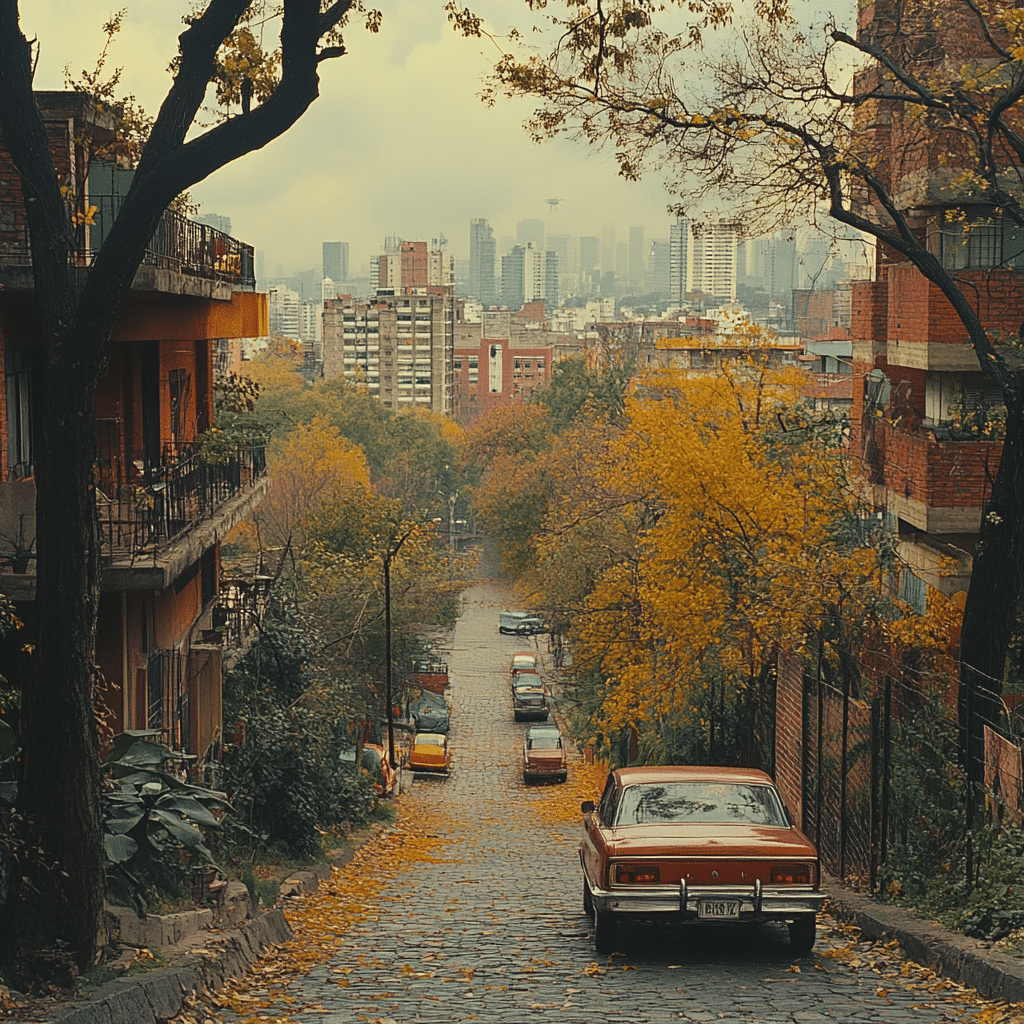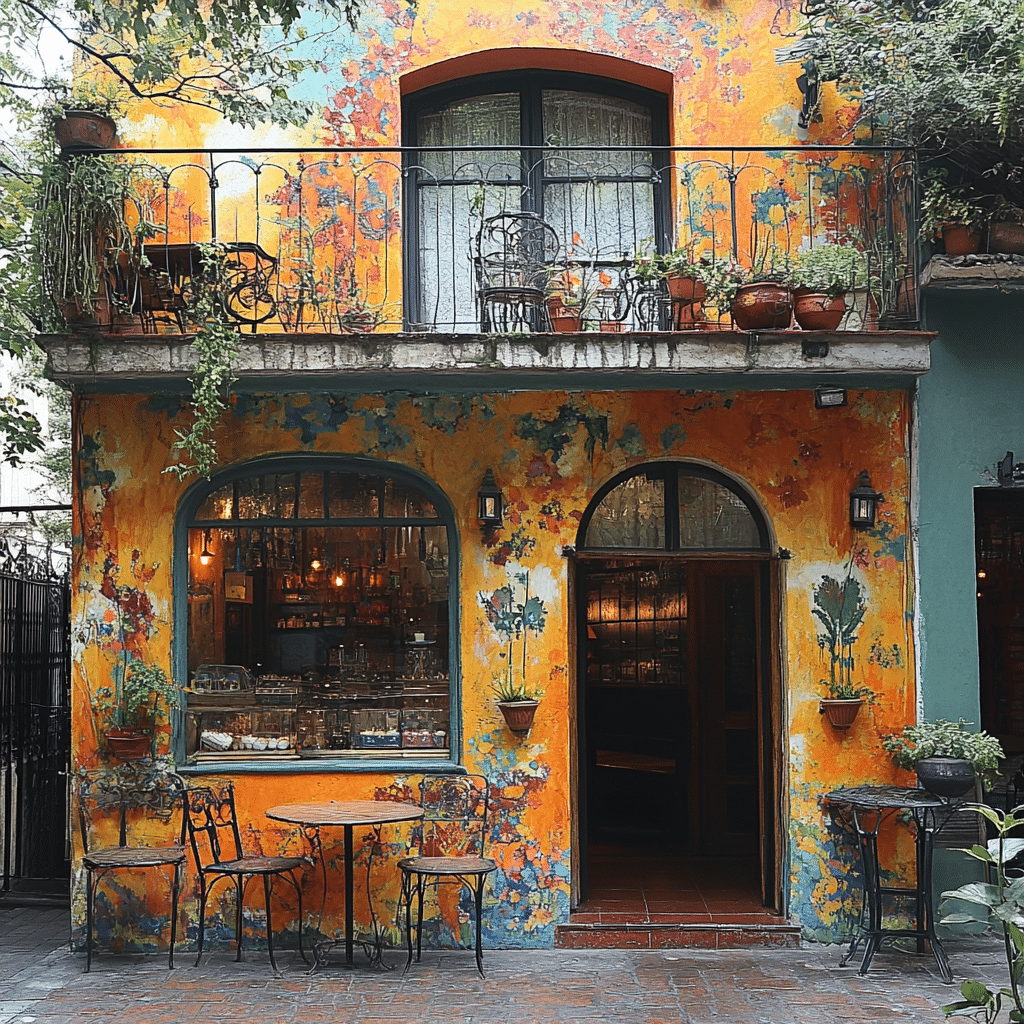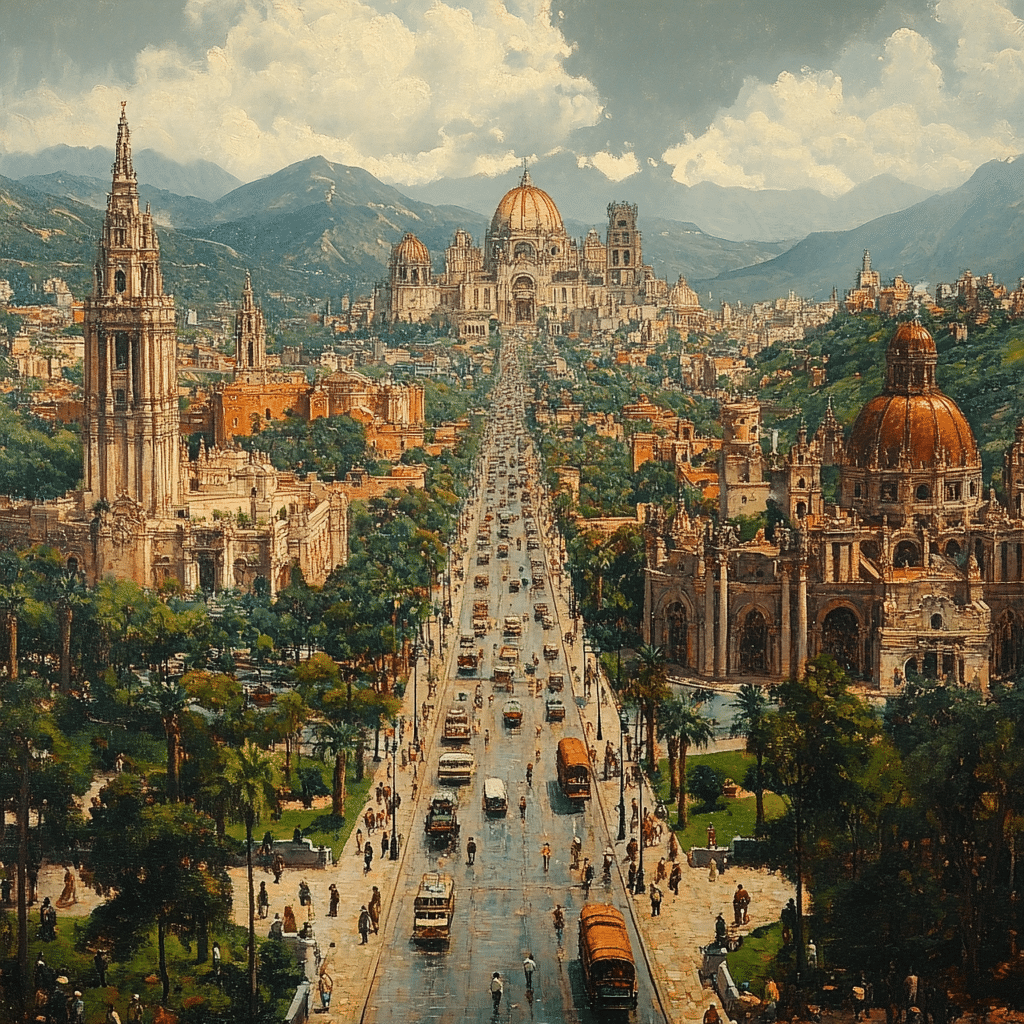History and Evolution of Americana in Mexico City
When contemplating Mexico City, one envisions a rich tapestry of traditional Mexican heritage intertwined with foreign influences. Among these, Americana Mexico City stands as a significant and enduring element shaping the urban narrative. The story of Americana’s influence swiftly began in the mid-20th century, marked by the arrival of American corporations, changing migration patterns, and vibrant cultural exchanges which left an indelible mark on the city.
The First Wave of Americana Influence
The early 1940s marked the arrival of American corporations like General Motors and Ford in Mexico City, igniting a legacy that reverberates today. Amid rapid industrial growth, the city’s architectural landscape began to shift. The Porfirian era’s eclectic styles started to merge with Art Deco influences. Iconic structures like the Torre Latinoamericana and Edificio Basurto arose, symbolizing this amalgamation and reflecting Mexico City’s burgeoning identity through an Americana lens.
Iconic Monuments Reflecting Americana Mexico City
Torre Latinoamericana: The Skyline Pioneer
In a period when skyscrapers were a rarity in Latin America, the Torre Latinoamericana emerged as a symbol of modernity and American architectural influence. Completed in 1956, this skyscraper, often compared to New York’s Empire State Building, stands as an emblem of Mexico City’s ambition and progress. It’s not just a technological marvel achieved through Mexican and American collaboration, but a cultural icon reflecting an era of transformation.
The Zona Rosa: A Cultural Melting Pot
During the 1960s and 70s, the Zona Rosa district flourished as a vibrant community for American expats. This neighborhood, buzzing with American jazz clubs, art galleries, and a nightlife that paralleled New York’s Greenwich Village, became a distinguished symbol of Americana Mexico City. Notably, the neighborhood witnessed the arrival of American fast-food giants like KFC and McDonald’s, coexisting harmoniously with local taquerias, highlighting the culinary synergy between American and Mexican traditions.
Americana in Mexico City’s Culinary Scene
The Rise of Diners and American Fast-Food Chains
From retro-themed diners such as Black Bear Diner to locally inspired chains reflecting fast-food concepts, the American dining model has profoundly impacted Mexico City’s culinary landscape. These establishments haven’t just introduced classic American dishes but adapted them to local tastes. A prime example is the hamburger al pastor, a fusion dish that marries the American burger with the traditional Mexican al pastor pork.

| Category | Details |
| General Information | |
| Official Name | Ciudad de México (CDMX) |
| Geographical Location | Capital and largest city of Mexico, North America |
| Climate | Subtropical highland climate; Median annual temperature: 15 °C (59 °F) |
| Elevation | 2,300 meters (7,546 ft) |
| Population | Approximately 22 million (city area by 2020) |
| Greater Mexico City | Approximately 21.3 million, largest metropolitan area in Western Hemisphere |
| Language | Spanish (Ciudad de México); Central Nahuatl: Mexihco Hueyaltepetl; Otomi: ‘Monda |
| UNESCO Sites | Multiple sites in and around the city (historical and cultural) |
| Historical and Cultural Importance | |
| Age and Origin | Oldest capital city in the Americas founded by indigenous peoples |
| Historical Landmarks | Constitution Square, Mexico City Metropolitan Cathedral, ancient ruins, and colonial architecture |
| Cultural Highlights | Museums, art galleries, traditional Mariachi music, rich in history and culture |
| Urban and Social Dynamics | |
| Economy | Leading urban center in the developing world due to diverse environment and historical significance |
| Urban Migration | Slowed; natural growth now primary cause of population increase |
| Polanco | Often referred to as the “Beverly Hills of Mexico”; luxury shopping, upscale restaurants, affluent inhabitants, diplomatic missions |
| Living and Visa Information | |
| Residency | Temporary Resident Visa required for stays up to 4 years; must be obtained outside Mexico. Permanent Resident Visa needed for longer stay |
| Notable Areas | Encompasses Mexico’s Federal District and extends to the west, north, and east |
| Visit and Tourism | Attracts visitors for its historical sites, cultural events, and culinary delights (particularly tacos) |
The Pop Culture Impact: Music, Cinema, and More
Rock ‘n’ Roll and the Counterculture Movement
The 1960s and 70s proved to be a transformative era for Mexico City’s music scene with the infusion of American rock ‘n’ roll. Influential bands such as Los Teen Tops and El Tri drew inspiration from American icons like Elvis Presley and Chuck Berry, sparking a fervent local rock movement. This wave of Americana influence transcended music, influencing Mexican filmmakers who began crafting films echoing the rebellious spirit of American New Wave cinema.
Preservation and Adaptation: Americana Mexico City Today
Contemporary Urban Development and Retro Revival
Today, Mexico City blends historical Americana elements with modern urban designs. Parque Delta, a shopping mall that once was a historic baseball stadium, exemplifies this approach to adaptive reuse. This space fuses mid-century American aesthetics with contemporary Mexican architectural innovations, creating a harmonious balance between the past and present.
The Role of American Corporations in Shaping Urban Spaces
American tech conglomerates like Google and Facebook now have offices in Mexico City, marking its transformation into a global tech hub. This trend complements the city’s growing focus on sustainability and innovation, reflecting a blend of Americana sprit with forward-thinking progress. These developments ensure that the legacy of Americana lives on while paving the way for a dynamic future.

An Ever-Evolving Urban Tapestry
As you navigate Mexico City’s bustling streets and historical avenues, the legacy of Americana is conspicuous. From architectural wonders that define its skyline to the cultural exchanges etched into its music, cuisine, and lifestyles, the influence is layered and dynamic. This interplay between American and Mexican elements continues to shape the city’s identity, offering an ongoing narrative of collaboration and cultural synthesis. Whether it’s the Torre Latinoamericana, emblematic of past architectural achievements, or the Zona Rosa, a testament to cultural convergence, Americana’s footprint in Mexico City is profound and enduring.
Americana Mexico City: Fascinating Urban Legacy
History and Evolution
Did you know that the creation of Americana Mexico City is steeped in drama and ingenuity? Back in the 20th century, it was viewed as a model of urban planning. Planners employed creative zoning techniques, much like developing different Hxh Arcs in a narrative, to segment residential, commercial, and recreational areas. This meticulous approach has given the area a unique patchwork charm that enchants both locals and tourists.
Innovation wasn’t just residential. Americana Mexico City also catered to the needs of an eclectic urban populace, resulting in diverse amenities and services. For instance, if you look at the evolution of community assistance, it parallels the efforts of die services international, tailoring programs for the well-being of its citizens. The area’s rich tapestry of culture and amenities truly makes it stand out.
Cultural Impact and Notable Figures
Americana Mexico City has been home to numerous icons and significant historical figures. For instance, the tragic tale of allen ray Nolt highlights the city’s profound impact on personal narratives. Such stories add layers to its already rich heritage and continue to attract history aficionados.
On a more cheerful note, the city often becomes a playground for global talent. Similar to how Tedx Speakers inspire audiences with engaging talks, Mexico City delivers a creative spark that’s hard to match. Public forums, workshops, and festivals light up this urban landscape, offering endless avenues for intellectual and cultural stimulation.
Sports and Recreation
Sports enthusiasts, rejoice! Americana Mexico City doesn’t drop the ball when catering to athletic souls. Dive into a game of local passion that mirrors the excitement seen during high-profile moments, such as Kyrie irving ‘s injury. This city has sprawling parks and sports complexes that host various games throughout the year, providing plenty of action for spectators and participants alike.
Moreover, the recreational scene isn’t limited to sports. Whether you’re contemplating a peaceful retreat or seeking novel experiences, Americana Mexico City offers activities analogous to a trip to Alvor portugal—a( place known for both tranquility and adventure. With so many opportunities to unwind or energize, it caters impeccably to multiple tastes and preferences.
Safety and Community
Safety, as they say, is paramount. Americana Mexico City has continually adapted to ensure the security of its residents. Much like how Amina Ahmed Met police have proactively evolved to meet contemporary challenges, local law enforcement works hand-in-hand with community leaders for a secure environment. Programs designed to engage residents, foster community bonds and create a sense of belonging are key highlights.
In conclusion, Americana Mexico City is more than a geographic location; it’s a dynamic hub where history, culture, sports, and community converge to create a fascinating urban legacy. So whether you’re a history buff, a sports fan, or simply seeking an exhilarating urban experience, there’s something in Americana Mexico City that’ll capture your heart and leave you yearning for more.

Can Americans live in Mexico City?
Americans can live in Mexico City by obtaining a Temporary Resident Visa, which allows them to stay for up to four years. However, you have to apply for this visa at a Mexican consulate in the U.S. After four years, you can apply for a Permanent Resident Visa if you wish to stay longer.
Where is the Beverly Hills of Mexico City?
Polanco is often referred to as the “Beverly Hills of Mexico City.” This area is known for its luxury shopping, high-end restaurants, and upscale hotels, making it one of the poshest neighborhoods in the city.
Can you lose your US residency if you live in Mexico?
Living in Mexico doesn’t mean you’ll lose your US residency. While you can live abroad, you must continue to pay U.S. taxes and may need to maintain a U.S. address or other ties to keep your residency status.
Can a US citizen buy a house in Mexico City?
Yes, a US citizen can buy a house in Mexico City. Foreigners have the same property rights as Mexicans when it comes to purchasing real estate in the city. Just make sure all paperwork is in order and consult a local attorney if needed.
What is the richest area in Mexico City?
The wealthiest area in Mexico City is Polanco. This neighborhood stands out for its concentration of luxury goods, embassies, elegant homes, and a high-net-worth population.
Where is the most expensive place to live in Mexico?
Polanco is also considered the most expensive place to live in Mexico City. With its upscale amenities and high demand, property prices and living costs in this area are significantly higher than in other parts of the city.
What city is known as the Black Beverly Hills?
While Mexico City doesn’t have a district referred to as the “Black Beverly Hills,” that nickname is often given to Baldwin Hills in Los Angeles, California.



